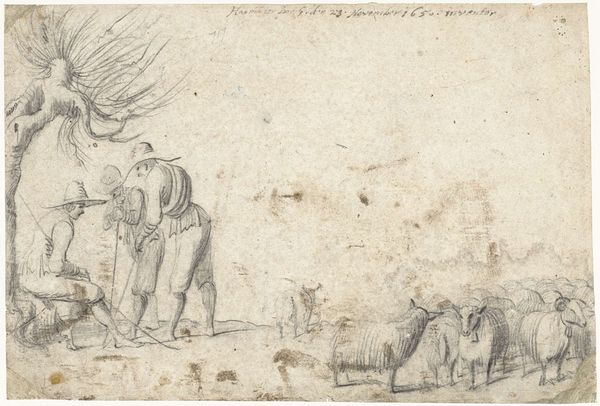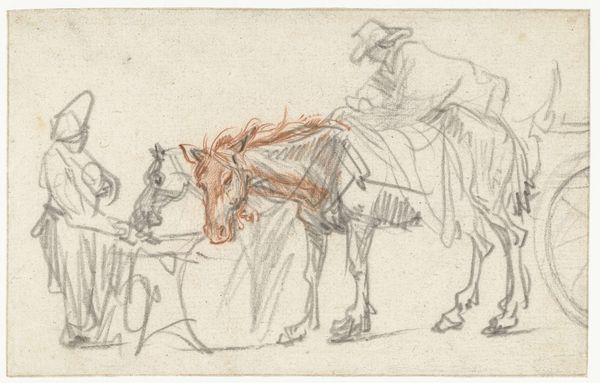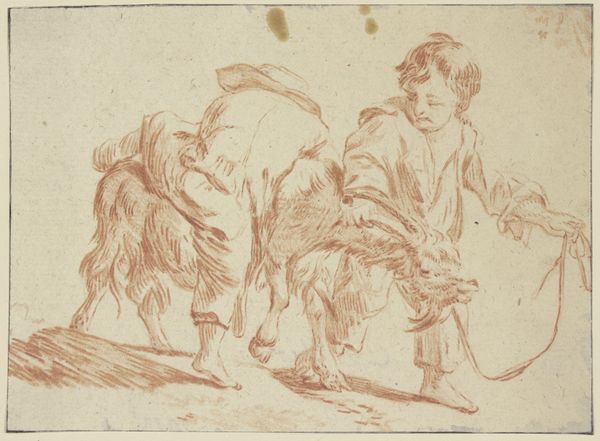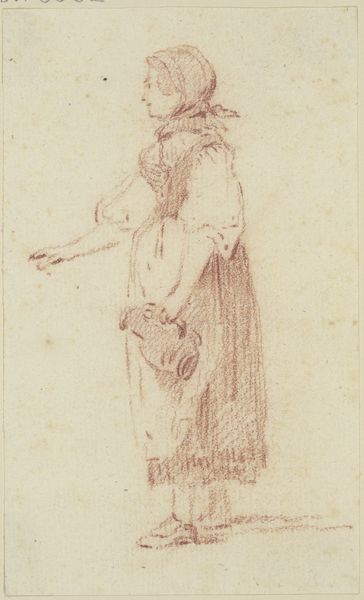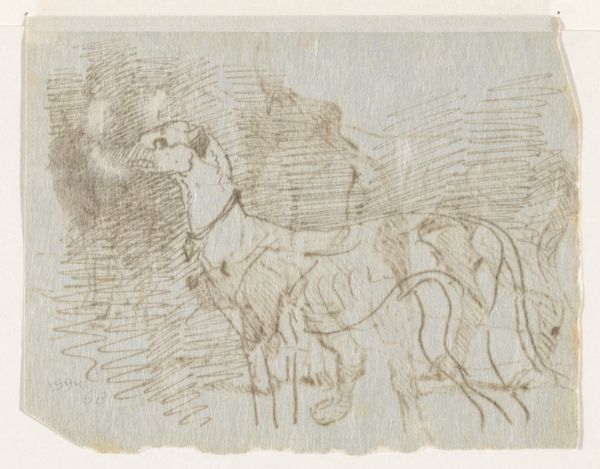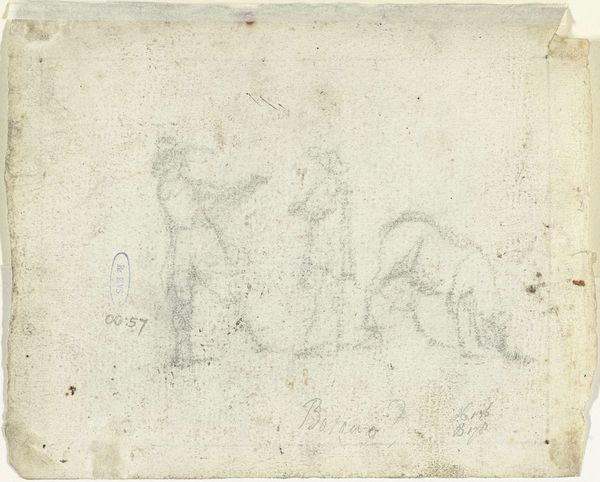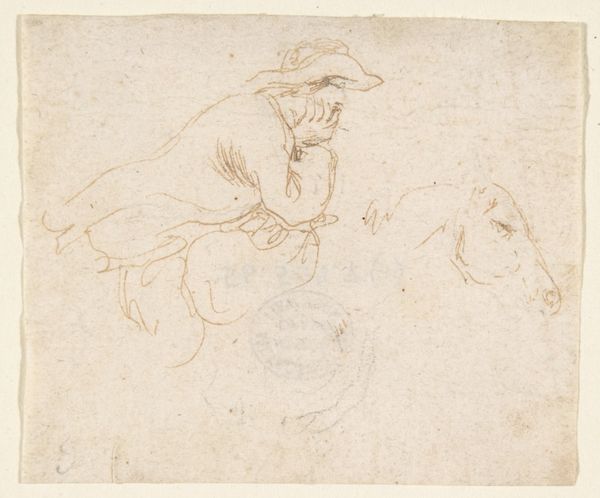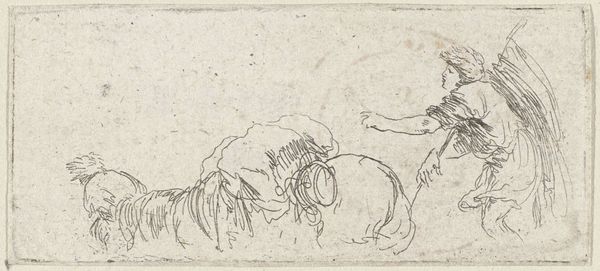
drawing, pencil
#
portrait
#
drawing
#
pencil sketch
#
charcoal drawing
#
figuration
#
romanticism
#
pencil
#
line
#
genre-painting
Dimensions: height 88 mm, width 130 mm
Copyright: Rijks Museum: Open Domain
This simple drawing, made by Simon Andreas Krausz around the turn of the 19th century, depicts a child with a goat on a leash. It is through these symbols that we must decode this image. In antiquity, the goat was often linked to fertility and abundance, a vital symbol in agrarian societies. Yet, as civilizations evolved, so did the goat’s symbolism, sometimes appearing in pagan rituals. Note the presence of the leash. This brings to mind the cyclical narrative of control and domestication, themes that permeate art history from the classical world to contemporary works. Think about the way artists, such as Picasso, have used the image of the goat to explore themes of pastoral life. The dynamic between the child and the goat, and the emotional interplay of innocence and restraint, resonates deeply within our collective consciousness. The simplicity of this sketch belies the complex web of cultural memory it evokes. The goat's image is non-linear; it resurfaces, evolves, and takes on new meanings, proving that symbols are in constant dialogue with the ever-changing human experience.
Comments
No comments
Be the first to comment and join the conversation on the ultimate creative platform.
